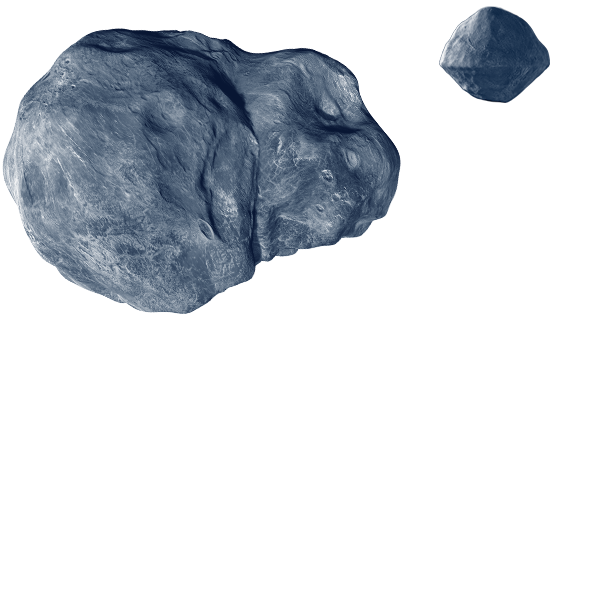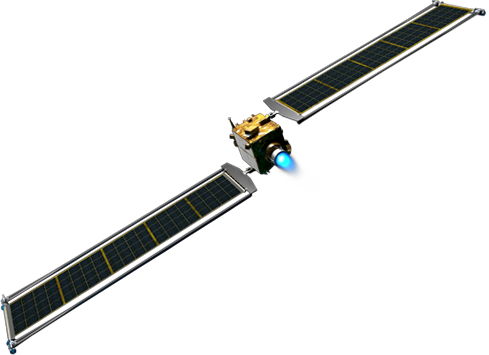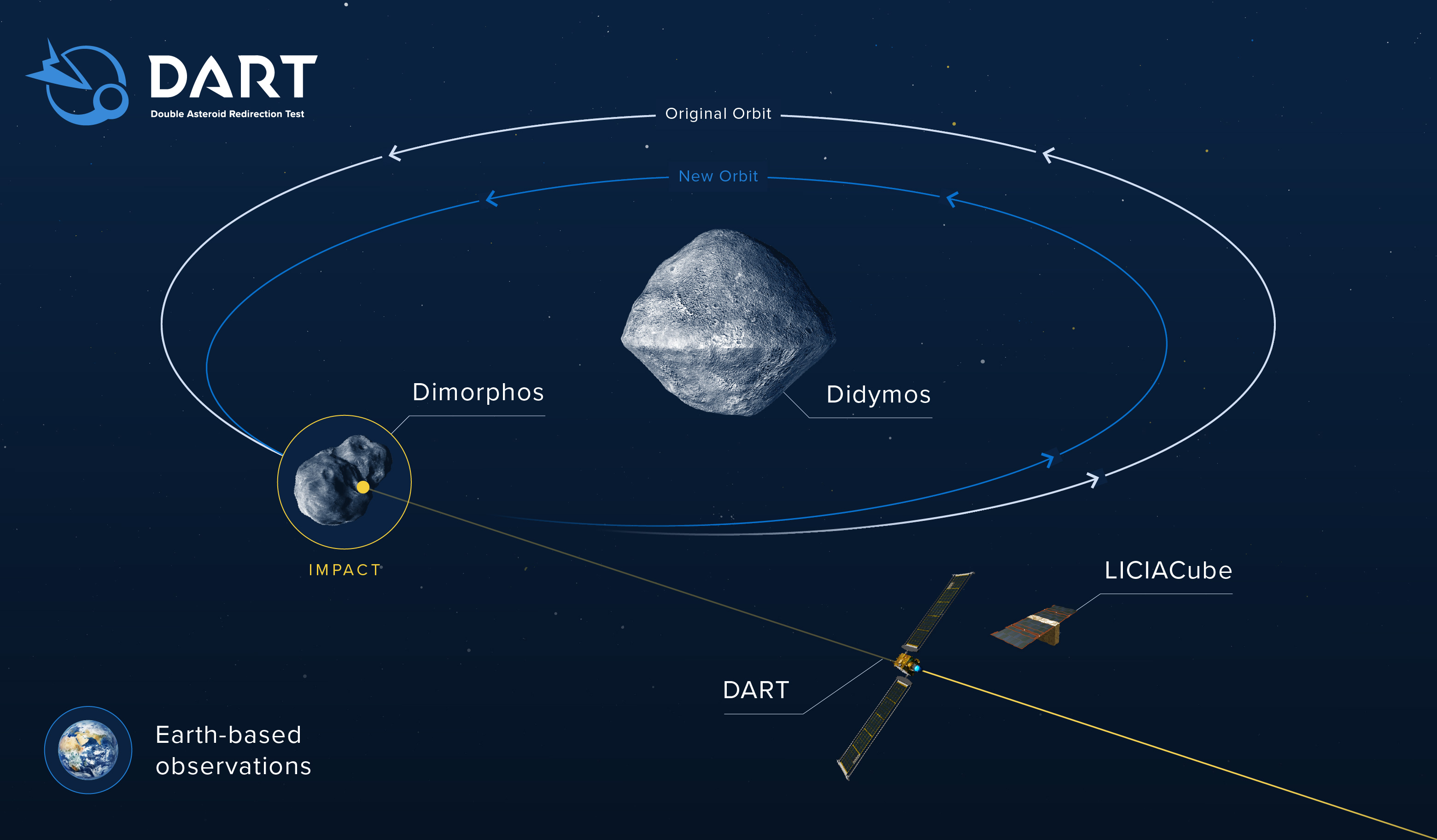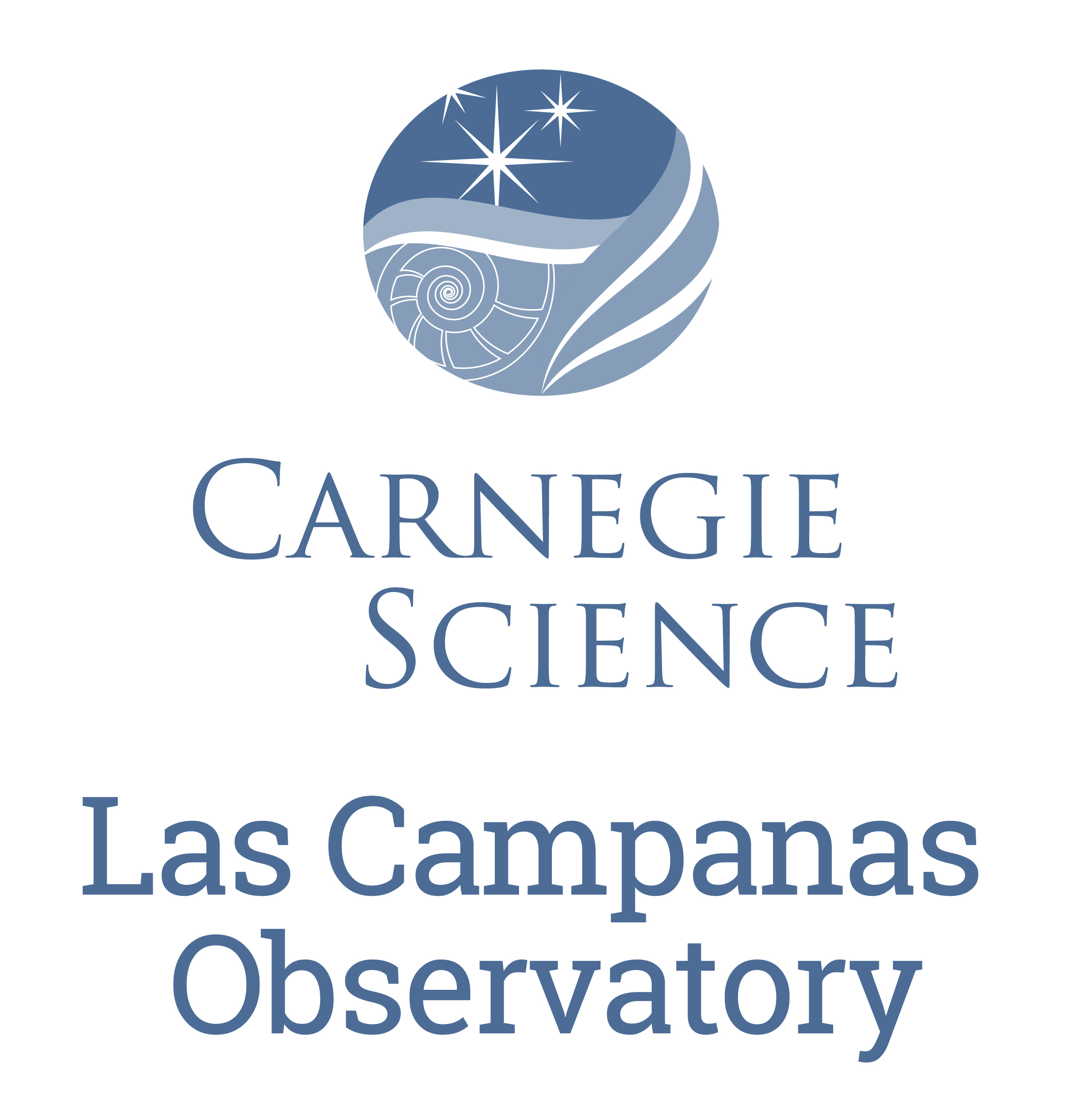Mission Overview


DART: Double Asteroid Redirection Test
An on-orbit demonstration of asteroid deflection is a key test that NASA and other agencies wish to perform before any actual need is present. The DART mission is NASA's demonstration of kinetic impactor technology, impacting an asteroid to adjust its speed and path. DART is the first-ever space mission to demonstrate asteroid deflection by kinetic impactor. The spacecraft launched on a SpaceX Falcon 9 rocket out of Vandenberg Space Force Base in California.
Launch:
November 23, 2021, 10:21 p.m. PST
(November 24, 2021, 1:21 a.m. EST)
DART Impact:
September 26, 2022, 7:14 p.m. EDT (23:14:24.183 UTC)



























